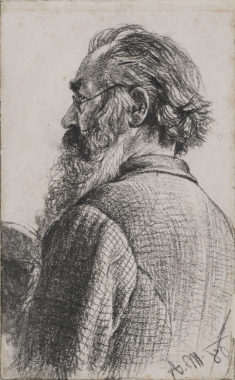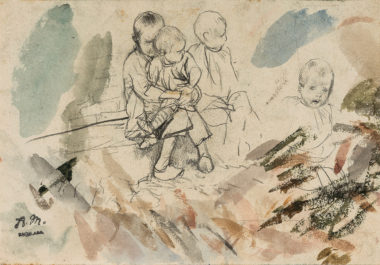Menzel, Adolph
Available Artworks
Sold Artworks
Biography
Adolph Menzel
1815 Breslau – 1905 Berlin
The Berlin-based artist Adolph Menzel enjoyed lifetime recognition for his paintings, drawings and prints. He earned the respect of prominent colleagues and influential contemporary critics. Numerous one-man exhibitions of his work staged in major museums, galleries and art associations added to his renown. He was accorded the highest national honours and elevated to the nobility. A comprehensive memorial exhibition staged shortly after his death at the Nationalgalerie in Berlin crowned his stellar career. The Nationalgalerie had regularly secured many of his major works for its collection and went on to acquire his artistic estate, thus guaranteeing him a permanent place in the annals of German nineteenth-century art.
Although Menzel’s rank as the leading German Realist painter is beyond dispute, this is too narrow a classification of his art-historical significance. In an artistic career spanning seven decades he produced an extraordinarily multifaceted range of pictorial imagery. His work encompasses early Impressionistic tendencies (The Balcony Room, Nationalgalerie Berlin), historical genre scenes (The Flute Concert, Nationalgalerie Berlin) and powerful depictions of the modern industrial age (The Iron-Rolling Mill [The Modern Cyclops], Nationalgalerie Berlin).
Unlike many of his contemporaries, Menzel regarded drawing as much more than a tool for compiling a repertoire of motifs for later use in paintings. For him, drawing was an autonomous artistic act. Paul Meyerheim, a friend and colleague, noted in his recollections of Menzel: ‘In his paletot he had eight pockets part-filled with sketchbooks; he could not believe that there were artists who regularly set forth, even for the briefest of trips, without a sketchbook in their pocket.’ Meyerheim also observed that ‘no object was ever too insignificant for Menzel, and he would sketch with almost compulsive zeal while walking, or on the spot.’ The working method Meyerheim describes accounts for the overwhelming number of drawings Menzel produced and their extraordinary technical virtuosity. The vast range of motifs he recorded testifies to his ceaseless efforts to capture the tiniest details of the world around him and interiorise them artistically. His achievement lies in arriving at a universal formula for his subjective vision, the reason why the fascination of his draughtsmanship remains undiminished today.
PDF Download

